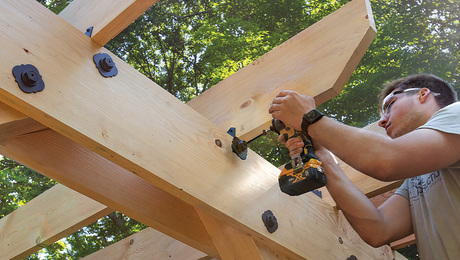Code question on propane.
The guy from a local propane company told my tech that the feeds to all of the appliances in our seasonal buildings need to have water traps installed, and that it is a building code requirement.
I have been looking in the IBC, and can’t find any mention of water traps on propane lines.
Does anyone have, a code reference to them?



















Replies
Don't have a code reference, but we had to have "drip legs" on our installation according to the guy that ran the line to our furnace.
Hi Jigs-n-fixtures,
The guy from a local propane company told my tech that the feeds to all of the appliances in our seasonal buildings need to have water traps installed, and that it is a building code requirement.....I have been looking in the IBC, and can't find any mention of water traps on propane lines....Does anyone have, a code reference to them?
I realize it's a bit of a pain to retrofit, but code or not it's worth doing. Go ahead and do it and in the mean time tell him to produce the code info.
Pedro the Mule - Of all things do gas right
I'm just trying to figure out what, the purpose would be. The system is constantly pressurized with propane, which is dry gas, and so far as I know isn't corrosive to the steel lines. So, I can't figure out what the traps could "trap".
It's just a tee with a three inch pipe nipple pointing straight down and capped to collect any debris or condensation that might be in the lines before they get into the valves and orifices of the equipment. calling it a "trap" is not as correct as the standard usage "drip leg." It serves an important function, is in-expensive, and easy to install. Not worth arguing about in my opinion.------------------
"You cannot work hard enough to make up for a sloppy estimate."
Hi Jigs-n-fixtures,
I'm just trying to figure out what, the purpose would be.
I put 'em on all my stuff......ya never know what happens inside the pipe between the factory, the store and the installation. Any trash that travels down the line from movement of the gas in the line will by way of gravity drop into the little T. Cheap insurance against little flecks of rusty pipe getting into the orafices.
Pedro the Mule - I'm still curious like you - Code required?
I'm with all the drip leg guys.You have to have one for each appliance, it collects and condensate, or trash.Plus it can keep the cost of maint., down, if it keeps any dust or whatever from the orifices and such.Drip legs are our friends! :)
It is a shame that all the people who really know how to run this country, and run it right, are busy, cutting hair, driving taxi's and trucks! I believe George Burns said something to that effect.
PB,
Question: If your gas line (propane or NG) is coming up from below then stubs out of the wall, how do you plumb the drip leg? In the wall with a U-turn? There is little to no room behind say, a range, for an exposed drip leg. No problem for an exposed drip leg @ a WH.
(I ask because I've actually seen a guy bring in the gas pipe from below, T the stubout, and put the drip leg pointing UP!)
Jim x 3
Actually I think the idea is to put the drip leg after the shutoff to the device. This way you can inspect it easier, and clean if needed.I've been called on that when the gas co. did their inspection. Had to fix it.The drip leg <<<<HAS>>>> to be pointed down! It's a gravity thing.Drip legs and unions are supposed to be exposed, can't be concealed, not even really in an attic.You may be able to stash the drip leg in the appliance also, I had to do that on a gas fireplace once.Anyway all info given here is Kentucky based, but can be used elsewhere, but might not be legal.Kentucky can be different at times.Hope I helped
It is a shame that all the people who really know how to run this country, and run it right, are busy, cutting hair, driving taxi's and trucks! I believe George Burns said something to that effect.
Not sure if you will find it in the IBC...but I am willing to bet it is in NFPA 54. I will try and find it but it has been in a gas code somewhere forever if I recall. I have been putting them in for better than 20 years and it is cheap insurance.
Also, I believe at appliances it is referred to as a sediment trap.
Edited 7/8/2009 12:01 am ET by ErnieK
International Fuel Gas Code 2003, Section 408, has a specific requirement for drips and sediment traps.
As I read that section of the code, it applies only for "wet" gas systems.
The propane, after the regulator, in the sytems I have are all dry gas, unless I am confused on the definition of wet and dry systems. Unfortunately the Fuel Code doesn't define the two terms.